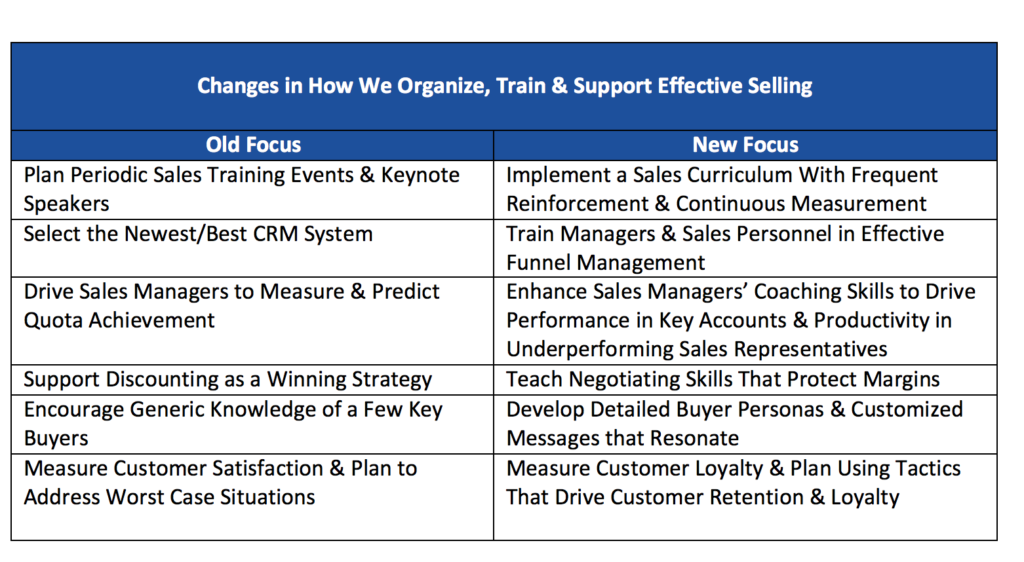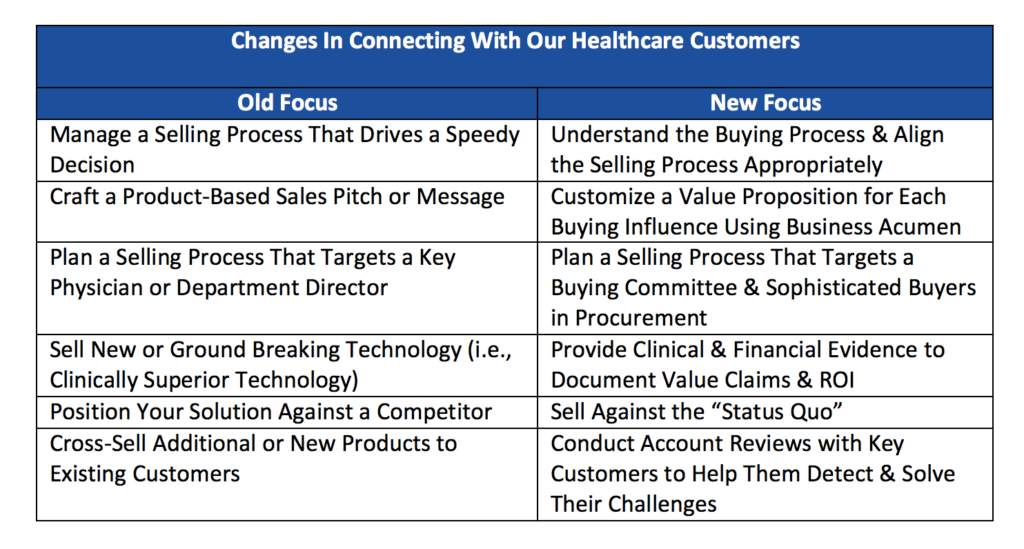A friend tells a story that may seem familiar to many of us. Several years ago—before GPS systems were commonplace–he was traveling by car with one of his sales representatives to visit an important customer. Although our friend had been to the account on numerous occasions, it had been several years and the landscape had changed. He was trying to read street signs and became alarmed to find that his vision was blurred. When he returned home he hastily scheduled a visit with an eye doctor to determine the problem. The doctor gave him a thorough eye examination and delivered the bad news: “I hate to tell you this…but you’re suffering from a disease for which there is no cure. You’re aging. I can’t cure it but I can offer a temporary remedy. How about a pair of glasses?” Once our friend got his new glasses, he remarked, “It’s amazing what I’ve been missing.”
This happens often in everyday life. Our vision of critical landmarks has become blurred over time because we are so accustomed to the terrain that we assume nothing has changed. Yet change is constant. Our old and reliable road maps are no longer accurate. If we are going to provide effective, visionary leadership to our sales teams, we must re-focus and take a closer look at how the sales environment within our organization is changing and how we are redefining our ability to connect with our customers. Our leadership challenges have shifted over time in subtle but important ways.
Let’s take a look at some critical changes within the sales landscape for many of us. They fall into two broad and wide ranging categories: 1) changes in how we, as selling teams, organize, train and support effective selling practices, and 2) changes in how we plan and execute communication with our customers. Some of these changes may seem very familiar while others may come as a surprise. For illustrative purposes we will focus on changes within healthcare but most of our examples apply to all industries.
Changes in How We Organize, Train & Support Effective Selling
For a moment, let’s consider how the selling milieu within many of our organizations has changed over the last several years.

- Promote, Measure and Reinforce a Culture of Sales Effectiveness. Sales training used to be a box that managers checked by scheduling several hours of training at a national or global meeting. Professional development is a continuous process—not an event. It requires a common sales methodology, frequent reinforcement and measurement. In short, it requires a plan that integrates best practices, a sales methodology, and a common language into the culture of the selling organization aligned to our customers buying process.
- Manage the Funnel. We meet many customers who are in the midst of changing to a new, more robust CRM system. Yet, when we ask them what they are doing to promote effective funnel management, they seem to believe that funnel management will automatically surface with a new CRM system. Not true! Until sales managers come to grips with managing and coaching to the sales funnel, no technological change will get you there. Get your sales managers up to speed on how to help their sales representatives detect problems, build strategy and allocate their time through funnel coaching and management before you spend more money on a high tech solution. If you want effective funnel management, your sales force must understand the funnel as well as their managers.
- Develop Coaching Skills of Sales Managers. While sales managers are responsible for financial growth in their regions, the surest way to promote growth is to provide timely, supportive coaching to sales representatives that are battling strong competition in major accounts, finding it difficult to connect with key executives or are stumped by stalled opportunities.
- Promote Negotiating Skills that Protect Margins. Within healthcare, every sales team is facing savvy procurement personnel who are pushing aggressively to lower costs. They are now professional buyers who are experts in their buying category and it requires considerable planning and skill development to handle their demands for price reductions.
- Develop Buying Personas and Messages that Resonate. A core challenge facing our sales teams is to understand that each buying influence may be looking for a different value. “One size fits all” messaging often overlooks the subtle differences in how each buying influence perceives and measures value. Today’s sales leaders are exploring sales playbooks and buyer profiles or personas to lend focus to the selling effort of their teams. They are also carefully crafting messaging that resonates with each individual based upon their personal motivations and the business results they wish to achieve.
- Measure and Focus on Improving Customer Loyalty. The old focus was one of assessing customer satisfaction but this isn’t the needle we want to move. Increasingly, companies are recognizing the need to focus on customer loyalty. Would our customer buy from us again? Would our customer recommend us to prospects? Does our customer see us as a valued business partner?
Changes in How We Connect With Our Healthcare Customers
Our relationships with our healthcare customers have changed. Sales representatives find themselves facing different buying processes and different buying influences.

- Align the Buying and Selling Processes. Not all buying organizations buy in the same way. Some have very complex, multi-tiered processes while others establish stringent specifications and depend on an RFP to weed out unqualified suppliers. As the number of buying influences increases, it becomes essential for the sales representative to understand the prospect’s organizational culture, who will impact the buying decision, what their buying process is and where they are in the buying process.
- Customize the Value Message. The value of your product, service or solution lies in what it does for your customer’s organization. Since each buying influence may have a somewhat different vision of benefits, return on investment and overall financial, clinical and operational value, messaging has become a critical factor in sales productivity. Effective sales representatives deliver the “right message to the right person at the right time”.
- Target the Full Buying Community. In the past, sales representatives have depended on a department head, service line director or key physician to make purchasing decisions. Today hospital systems are standardizing their purchasing processes to reduce overall costs. The sales representative can expect to face am expanded buying community that includes procurement professionals with product specialization, value analysis committees and senior executives.
- Document Value Claims. Today the sales representative has to provide the buying team much more than a marketing brochure that outlines product features and touts benefits. New is not enough. If your product is better, prove it! Today’s buyers are looking for documentation of value, proof of performance, and evidence of ROI. The sales representative needs to be armed with a compelling business case, clinical studies published in peer review journals and testimonials. No one wants to be the beta test for a new or revised product.
- Attack the Status Quo. When a sales opportunity stalls, it’s easy to conclude that no decision has been rendered and the opportunity may resurface on its own in the near future. Let us suggest an alternative reality for you. You competed against the status quo and lost! You may have assumed wrongly that there were no competitors active and it was yours to win. Your real competition was “do nothing” or the status quo. As a sales representative, you need to take a fresh look at your competition and develop a strategy to undermine support for the status quo. Build a business case to show the cost of doing nothing.
- Conduct Customer-Facing Account Planning. Cross-selling additional products to an existing customer makes good business sense…to the sales representative but not so much to the customer. Customers are skeptical of investing a large amount of their expenditure budget in a single company. If you want to sell more, sell different! Develop account planning and review processes that include your customer. Create an opportunity for the buying influences to provide feedback and for the selling organization to demonstrate its ability to address the customer’s needs.
Parting Thoughts
The challenge facing our profession is to address—even embrace—the changes in the buy-sell process. Sales representatives are facing more decision makers with greater expertise and higher expectations. On the selling side, this means forging a broad network of relationships among buying influences, managing value messages that resonate, providing proof to support claims while jointly planning ways to solve customer problems and needs.


